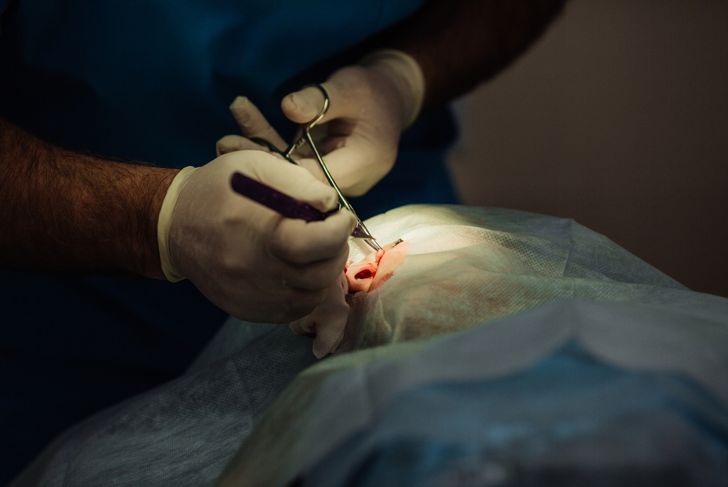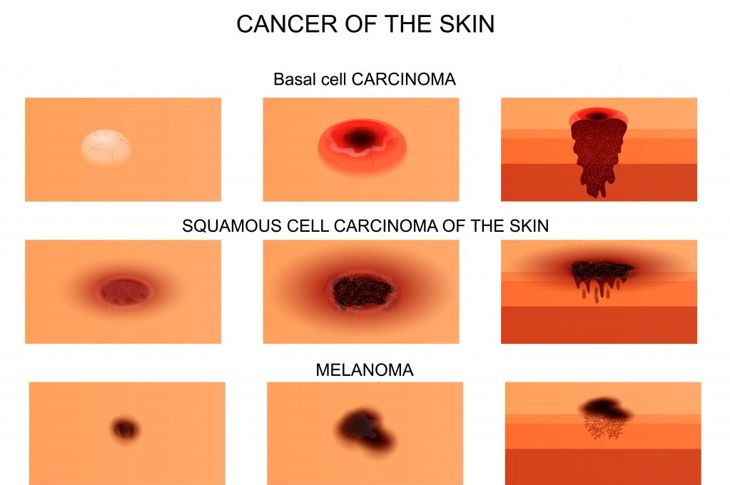Cancer is a scary word coming from your doctor. There are many forms of cancer, but skin cancer is the most common in the United States. Three of the most common skin cancers are Basal Cell, Squamous Skin Cell Carcinoma, and Melanoma. Basal and Squamous are curable but costly and can lead to disfigurement. Melanoma is the most serious and left untreated can spread to the internal organs which can lead to death.Research is still being done to rid the body of cancer. However; there is a treatment for skin cancer which was developed years ago, called Mohs Micrographic Surgery or Mohs Surgery.
What is Mohs Surgery?
Mohs Surgery is not new; Fredric E. Mohs developed it in the 1930s. It was initially called Chemosurgery but was renamed in the 1960s for its founder when Perry Robins M.D., a dermatologist, worked with Fredric Mohs to enhance the procedure. After word spread in the 1970s and 1980s, the method was used more often but has gained in popularity over the past 15 years.Mohs Surgery has proven to be cost-effective in treating Basal and Squamous Skin Cell Carcinoma. Patients experience little scaring and a high cure rate of about 99 percent when treated for the first time and 94 percent in patients with the recurring disease after previous treatments. Some Melanoma Cancers have been treated successfully with Mohs Surgery. Mohs is not highly recommended for Melanoma since this type of cancer can spread deep into the skin and organs.
What is the Procedure for Mohs Surgery?
Mohs Surgery is performed in one visit, as an out-patient procedure. A qualified surgeon, trained in the Mohs Micrographic Surgery Procedure, Pathology, and reconstructive surgery performs the process.The surgeon marks the cancerous area in preparation for the surgery; the area will be injected with a local anesthetic to numb that spot. When the anesthetic takes effect, the surgeon will start removing a thin top layer of cancer. When the layer is removed, it will be sent to an on-site lab.While the patient waits, the lab technician freezes and cuts the layer so the surgeon can examine it under a microscope. If cancer cells still exist, the surgeon removes another layer, and the process begins again until cancer cells are no longer present. When necessary, the surgeon will stitch the area or for larger wounds do a reconstructive repair. Once complete the patient is sent home, cancer free.
What are the Advantages of Mohs Surgery?
There are several advantages to having the Mohs Surgery. These advantages are not only time-savers but can also be life-changers. The benefits include:
- Cost Effective, with only one visit for the entire process.
- Out Patient Surgery allows the patient to go home the same day for recovery.
- Local Anesthesia makes surgical recovery time much shorter.
- Precise Procedure allows doctors to examine the tumor 100 percent and save healthy tissue
- The operation leaves little to no scaring of the affected area.
Mohs Surgery has a high cure rate at 94 to 99 percent and is excellent for high-risk non-melanoma skin cancer, especially in sensitive spots such as the eyes, nose, lips, scalp, fingers, toes and genital areas.
Who is a Candidate for Mohs Surgery?
Mohs Surgery might not be for everyone, however; with its high cure rate, it is the treatment most often used for patients that have high-risk nonmelanoma skin cancer. Skin cancer becomes high-risk when it develops in individuals with a depleted or suppressed immune system.Other conditions that might benefit from the operation is large cancers in low-risk areas, skin cancer with undefined borders, recurring tumors after treatment and cancer spots that were not entirely removed by other therapies.
Is Mohs Surgery Just for the Older Adults?
Skin cancer is on the rise in the younger generation; they spend more time outdoors or in tanning beds, exposing themselves to harmful ultraviolet rays without skin protection. When a spot appears they dismiss it thinking it is not a big deal until it either grows larger or becomes more noticeable.Having it removed, especially on the face or neck where scarring can be an issue, can be unnerving. The cosmetic procedure that accompanies the Mohs Surgery can relieve the pressure of keeping that youthful, flawless appearance while curing what could potentially become worse.
Why is it Important to Get Treatment?
Melanoma is by far the worse type of skin cancer and when left untreated can spread throughout the body and into the organs leading to death. However; Basel Cell Carcinoma and Squamous Cell Carcinoma can also be dangerous if left untreated. Basel Cell Carcinoma is not known for metastasizing into the organs, but it can spread along the nerves, blood vessels and down into the bone causing severe damage and costly more extensive surgery in the future. Squamous Cell Carcinoma has a small chance of metastasizing and causing death. Having it treated in the early stages can prevent this from happening.
Why Consider Mohs Surgery Over Other Treatments?
There are several treatments for skin cancer including excision, cryosurgery which freezes the cancer cells, curettage and electrodesiccation or scrapping and burning, photodynamic therapy and even topicals are available. These treatments are very good for small, low-risk spots around the back, arms, and legs. All of these treatments are done in several visits. These treatments can cost the patient more time and money.Mohs Surgery is used with overwhelming success for the more extensive nonmelanoma cancer spots located in a more noticeable part of the body. The procedure is done in stages all on the same day. The amount of time it takes depends on the number of times the surgeon has to remove tissue. The operation is time-consuming, but it gives the surgeon a full view while examining the cancerous spot from top to root and eradicating it.
Will Insurance Cover the Procedure?
Since Mohs Surgery is medically necessary to treat skin cancer, most insurance companies including Medicare will cover the procedure. It is best to get with your insurance company to determine if it will be covered.If insurance is not available or the operation is not covered, talk with the surgeon’s office manager and see if there is another option for payment, some will set up a payment plan to help patients afford the care they need.
What to Expect after the Surgery
Once the procedure is complete, the surgeon will either apply stitches, do a skin graph or a skin overlap depending on the size of the wound. The office will send you home in bandages and with post-surgical care instructions. If stitches were applied, they would be removed in the doctor’s office between four and 14 days.Most patients report some discomfort after the procedure but few reported pain that can’t be controlled with over the counter pain medications.
How do I Prevent Skin Cancer?
Your skin is what protects your internal organs, and it provides you with much-needed vitamin D. So, it is essential to take care of your skin and protect it from the damage that the sunlight and other environmental hazards that can do to damage. With proper care, it is less likely that skin cancer will be an issue. But if it is, the Mohs Surgery is worth the time it takes to go through the process.

 Home
Home Health
Health Diet & Nutrition
Diet & Nutrition Living Well
Living Well More
More




















